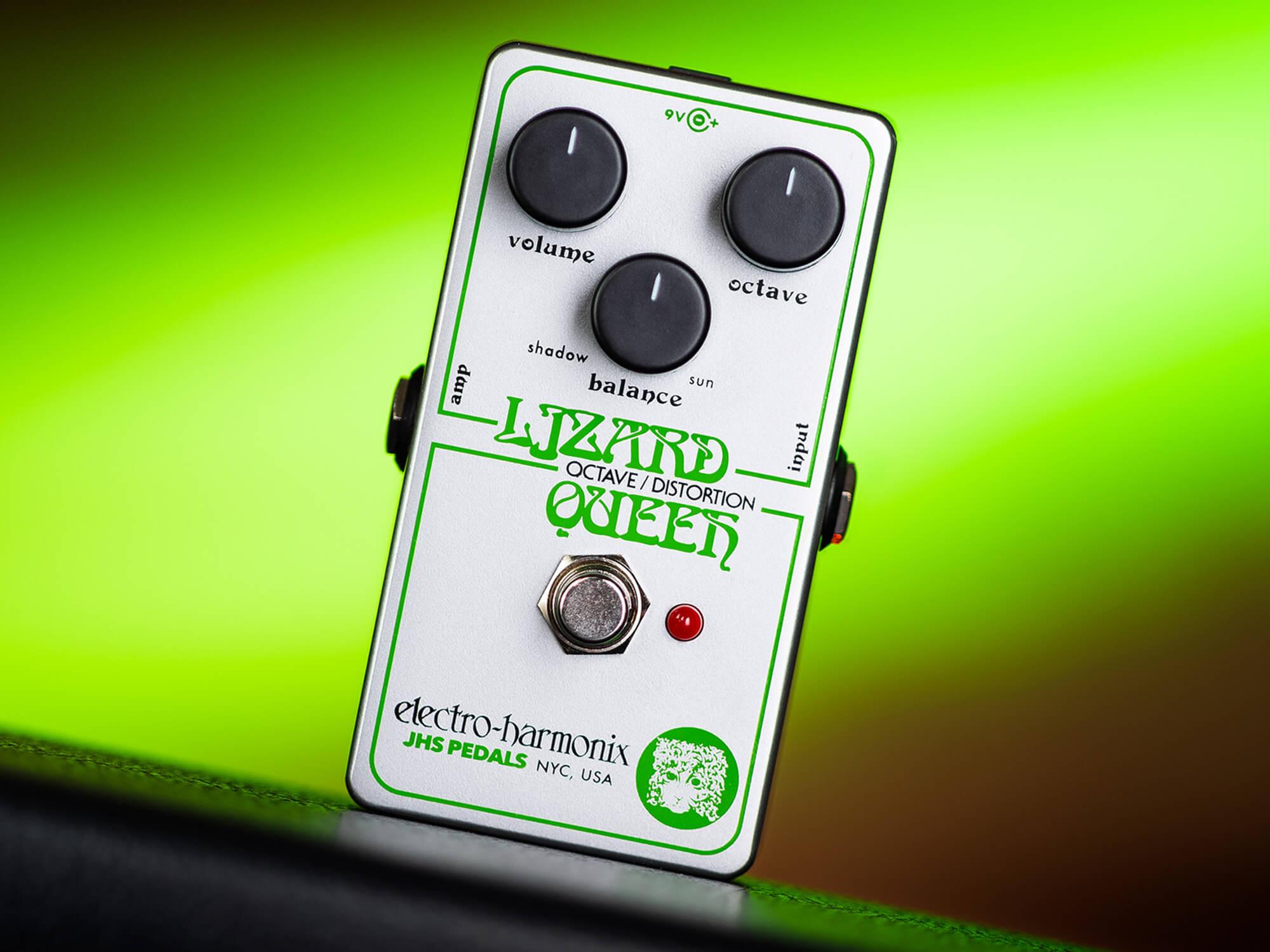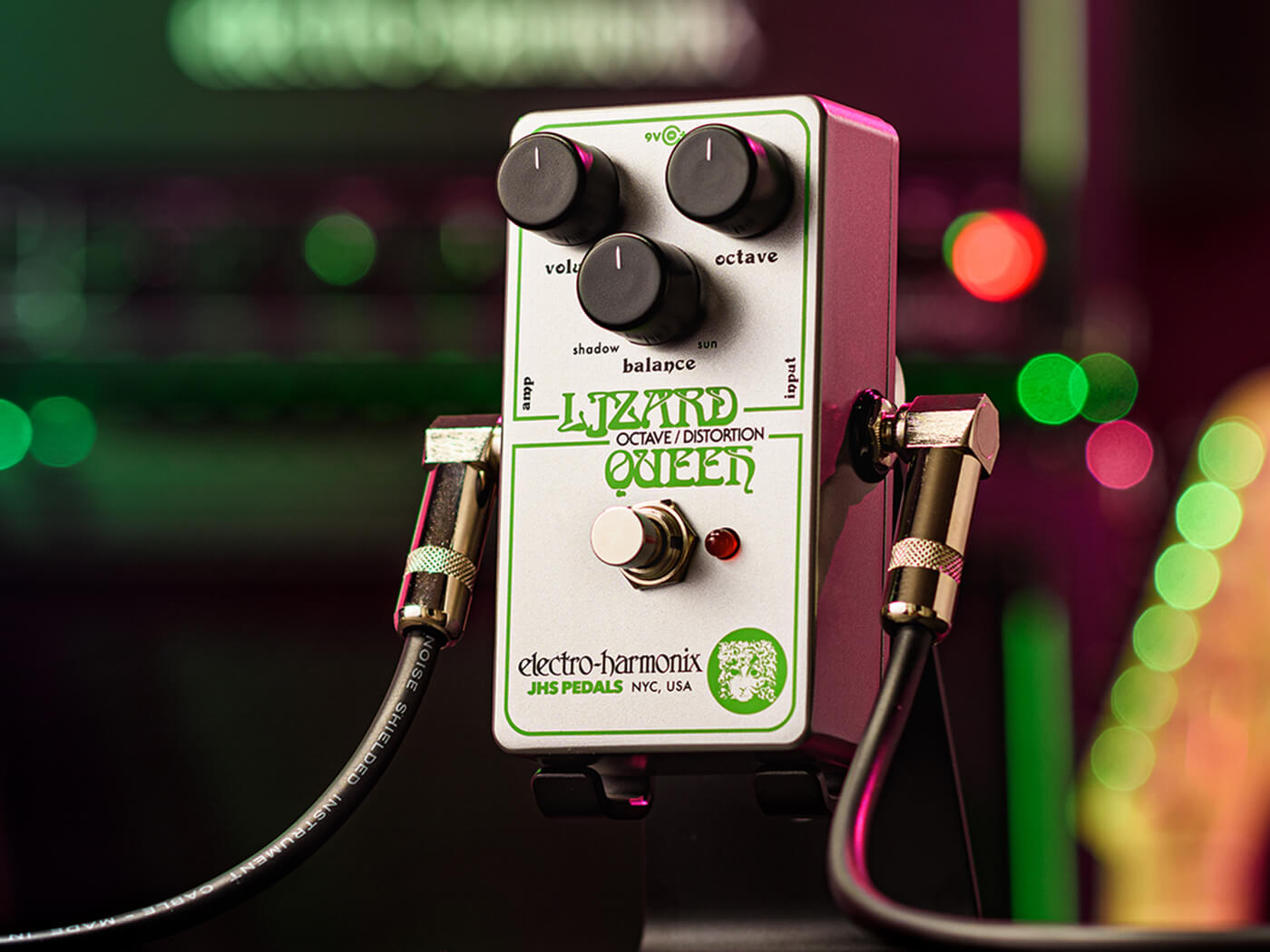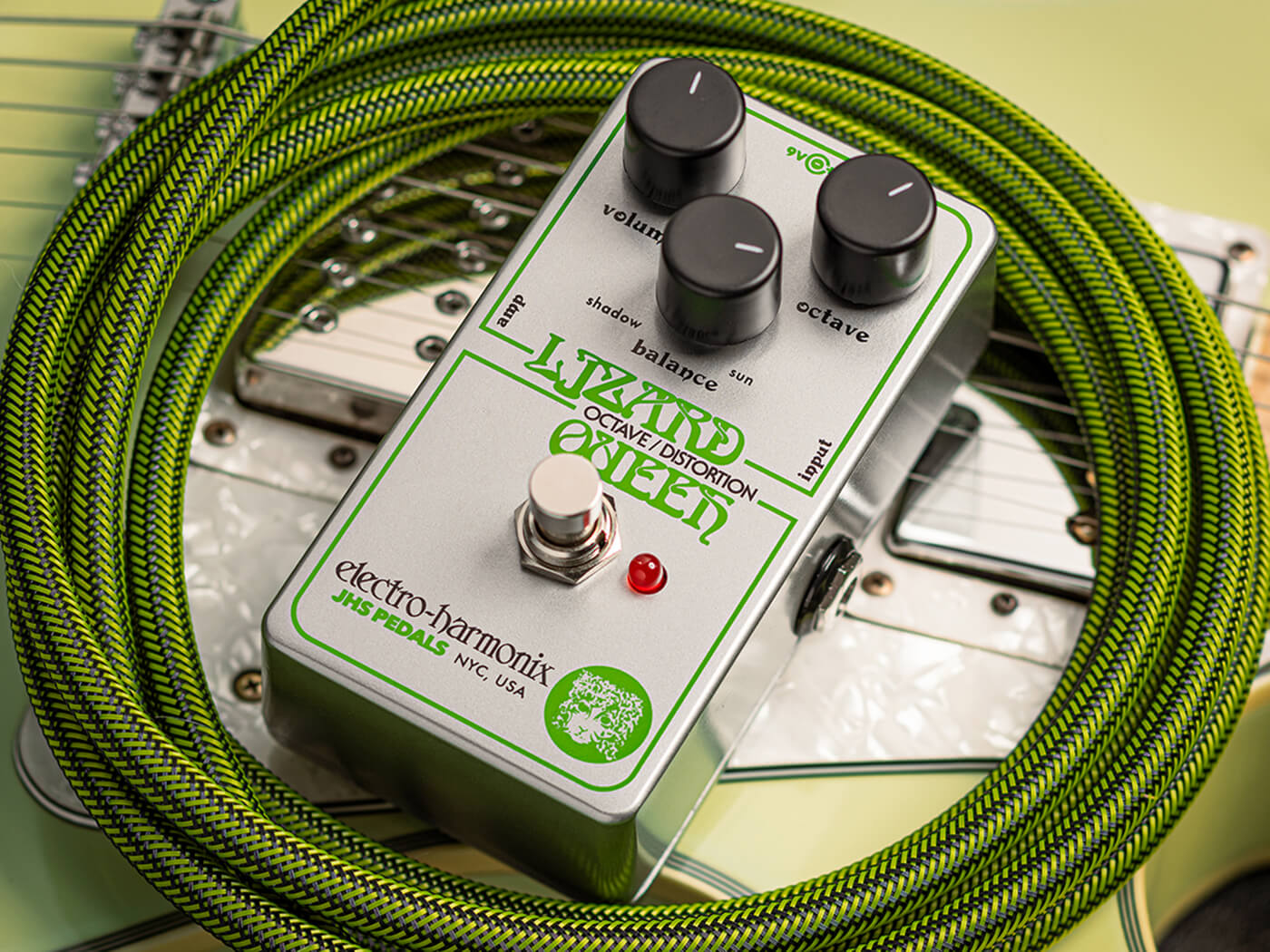Electro-Harmonix Lizard Queen review: an imaginary classic turned into a real octave fuzz
A semi-accidental collaboration between EHX and JHS Pedals, this high-gain distortion with blendable up-octave was never supposed to exist… but we’re glad it does

Image: Electro-Harmonix
Review Overview
Our rating
8
Our verdict
There’s a school of thought that says Josh Scott should spend less time goofing around making YouTube videos and more time working on effects pedals… but if he did that, the Electro-Harmonix Lizard Queen might never have happened.
What started out as a playful ‘craft project’ for JHS Pedals’ hugely popular YouTube channel – let’s see if we can build a fantasy EHX pedal from the 1970s – went over so well that it ended up becoming an actual product: a fuzz/distortion with an octave effect that can be dialled in to taste.
The original run included 1,000 pedals in the full 70s-style ‘big box’ enclosure, but they were already sold out by the time JHS’s launch-day livestream finished – yep, another one of those wacky videos – so the rest of us will have to make do with this, the nano version. We’re assured it’s sonically identical, the larger unit’s various NOS components having been replaced by modern equivalents with matched values.

The three-knob nano layout is familiar enough by now, and at first glance you could easily mistake this for yet another Big Muff variant… but the controls made it clear this Queen is not one to be consorting with the riff-raff. For a start there’s no gain knob – it’s fixed – and while ‘balance’ really just means tone, what’s interesting is the way the upper octave can be blended in rather than just switched on or off. That’s a potentially nifty feature and quite an uncommon one – though EHX has already tried it with the Octavix (you’d be hard-pushed to find an idea that the relentlessly experimental EHX hasn’t tried at some point).
In Use

Let’s park the frequency-doubling stuff for a minute and start by finding out what kind of fuzzy foundation we’re dealing with here. Well, it turns out Her Reptilian Majesty is not so distant from the peasantry after all, because this thing is very Muffish indeed.
With the balance control at minimum, the Lizard Queen produces a thick and gurgly high-gain distortion that goes big on, erm, bigness. But what you’re not getting here is the classic buzzy mid-scoop of a Muff – it’s much more ‘present’ than that. And it’s not bad at all.
Turning up the central knob makes very little difference in this mode… but once the octave circuit gets involved, it becomes clear that these two controls are highly interactive – and they allow for numerous shades of raspy coloration, from a menacingly edgy snarl to a full-on gated Foxx Tone Machine tantrum. There is an actual up-octave effect in there, but it doesn’t become clearly audible until both dials are maxed out, and even then it’s not as distinct as some. This thing’s really all about the gnarly textures.

And how does it clean up when you nudge back the guitar’s volume control? Quite nicely, as long as the balance and octave knobs are both set low… otherwise, avoid doing this unless you like the sound of horse farts.
If you’re being super-charitable, you could argue that a certain amount of inconsistency in build quality is all part of EHX’s ‘charm’ – in which case you won’t mind the fact that, although the Lizard Queen ships with a battery installed, this one would only run on mains power. Even if you do mind, it’s hard to stay angry at a pedal that’s this much fun.
Like this? Try these
- Orange Fur Coat £119
- Spaceman Nebula $300 approx (used)
- Electro-Harmonix Octavix £99




